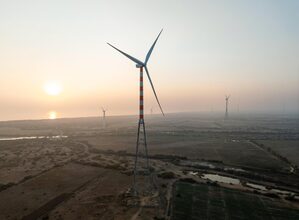Year Ender 2024: From steel to semiconductors, India’s manufacturing sector scales new heights in various fields
New Delhi, Dec 31 (IANS) India’s manufacturing sector is making its presence felt on the global stage across industries ranging from electronics to steel, with the country emerging as the world’s third-largest smartphone exporter and net exporter of steel for the first time.
Driven by government initiatives and strategic investments over the last decade, the country steadily positioned itself as a global manufacturing hub – from producing record volumes of crude steel to meeting rising domestic and global demands, to pioneering advancements in electric vehicles and consumer electronics.
Sectors once considered niche, like toys, are experiencing unprecedented expansion with exports increasing by a whopping 239 per cent and imports declining by 52 per cent.
India’s pharmaceutical industry, too, now boasts of 748 USFDA-approved sites, a testament to its world-class manufacturing capabilities. The surge in the production of solar panels and wind turbines reflects India’s growing commitment to renewable energy.
India’s manufacturing sector has witnessed remarkable growth in 2024, underscoring its transformation into a global powerhouse. The year also marked 10 years of Make in India under which remarkable strides have been made to turn India into a manufacturing giant.
Over the last decade, India’s manufacturing sector has undergone a significant transformation, largely propelled by the “Make in India” initiative. Key developments include the introduction of Production Linked Incentive (PLI) schemes across 14 sectors, spurring growth in electronics, steel, pharmaceuticals, and defence manufacturing, with notable achievements like a 239 per cent increase in toy exports and a 600 per cent rise in mobile phone production.
India has become a net exporter of steel, with production doubling, and has significantly reduced import dependency in pharmaceuticals and telecom equipment. Defence exports have soared, reaching over 85 countries, while the country has also made strides in semiconductor manufacturing and renewable energy, enhancing its global manufacturing stature by 2024.
FY2023-24 saw an economic growth of 8.2 per cent which was bolstered by an industrial growth rate of 9.5 per cent, with the manufacturing and construction sectors nearing double-digit expansion.
A host of initiatives have further streamlined India’s manufacturing ecosystem across sectors in 2024, These include the Jan Vishwas 2.0 Bill, while the development of of plug-and-play industrial parks near 100 cities attracted investments.
India achieved its highest-ever steel production and consumption levels in FY24, becoming a net exporter of finished steel, with production increasing by 50 per cent since 2014.
The pharmaceutical industry, valued at $50 billion, remains the world’s third-largest by volume. Investments worth Rs 30,000 crore under PLI schemes have catalysed growth in biosimilars, vaccines, and generic drugs, cementing India’s global leadership in affordable healthcare solutions.
The labour-intensive Micro, Small, and Medium Enterprises (MSMEs) remain the backbone of India’s manufacturing sector, contributing 35 per cent of the total output and 45 per cent of exports. As of 2024, 4.7 crore MSMEs are registered on the Udyam Portal, benefiting from credit schemes that provided 92 lakh guarantees worth Rs 6.78 lakh crore.
The Prime Minister’s Employment Generation Programme also supported over 89,000 micro-units, creating employment for 7.13 lakh people in FY24.
India’s PLI schemes have played a transformative role in accelerating the country’s manufacturing sector, making it a global hub for industrial production. They have enabled investments of over Rs 1.28 lakh crore, generating 8.5 lakh jobs, and boosting exports by Rs 4 lakh crore. This has led to production and sales worth Rs 10.8 lakh crore, demonstrating the significant impact of the policy.
The electronics manufacturing sector, in particular, witnessed exponential growth, with domestic production increasing by 400 per cent from Rs 1.9 lakh crore in 2014 to Rs 8.22 lakh crore in FY23.
This includes the mobile phone segment, where the direct workforce has more than tripled between FY17 and FY22, significantly benefiting female workers.
The pharmaceutical sector has also greatly benefited, with Rs 30,000 crore in investments under the scheme. This has strengthened India’s capabilities in the production of APIs, vaccines, biosimilars, and biologics, consolidating its position as the world’s third-largest pharmaceutical market by volume. Similarly, PLI support for white goods like air conditioners and LED lights has reduced import dependency, enhanced domestic production, and created jobs.
The steel sector has seen a remarkable transformation, with production increasing by 70 per cent since 2014, making India a net exporter of finished steel. The success of the PLI schemes has also extended to newer areas, with 2024 witnessing the introduction of incentives for biomanufacturing and the launch of the Critical Mineral Mission, aimed at securing resources essential for manufacturing sectors like EVs and semiconductors.
By fostering large-scale investments, creating employment opportunities, and boosting exports, the PLI schemes have positioned India as a critical player in global value chains.
The electronics manufacturing cluster scheme attracted Rs 40,000 crore in investments, generating 5 lakh jobs, while solar capacity increased 25-fold since 2014, demonstrating India’s clean energy commitments.
Over the past decade, textiles and apparel exports have grown by 20 per cent, reaching Rs 2.97 lakh crore, making India a top-five global exporter in the sector.
India’s semiconductor industry reached a historic turning point in 2024. The country is set to achieve an annual capacity of 2,500 crore chips, producing semiconductors for applications ranging from automotive and electric vehicles to consumer electronics and telecom.
The establishment of India’s first semiconductor fabrication plant, with an investment of $100 billion, will facilitate the production of 50,000 wafer starts per month, serving sectors like defence, EVs, and high-performance computing. Indian companies have also started producing silicon carbide devices to address the global surge in demand for advanced chips.
In parallel, research in semiconductor manufacturing has scaled new heights with initiatives like the National Research Foundation, which allocated Rs 1 lakh crore to foster private-sector-driven innovation.
Additionally, the upcoming Bharat Semiconductor Research Centre and partnerships between Semiconductor GCCs and IITs are upskilling engineers and advancing next-generation chip development.
–IANS
sps/vd




